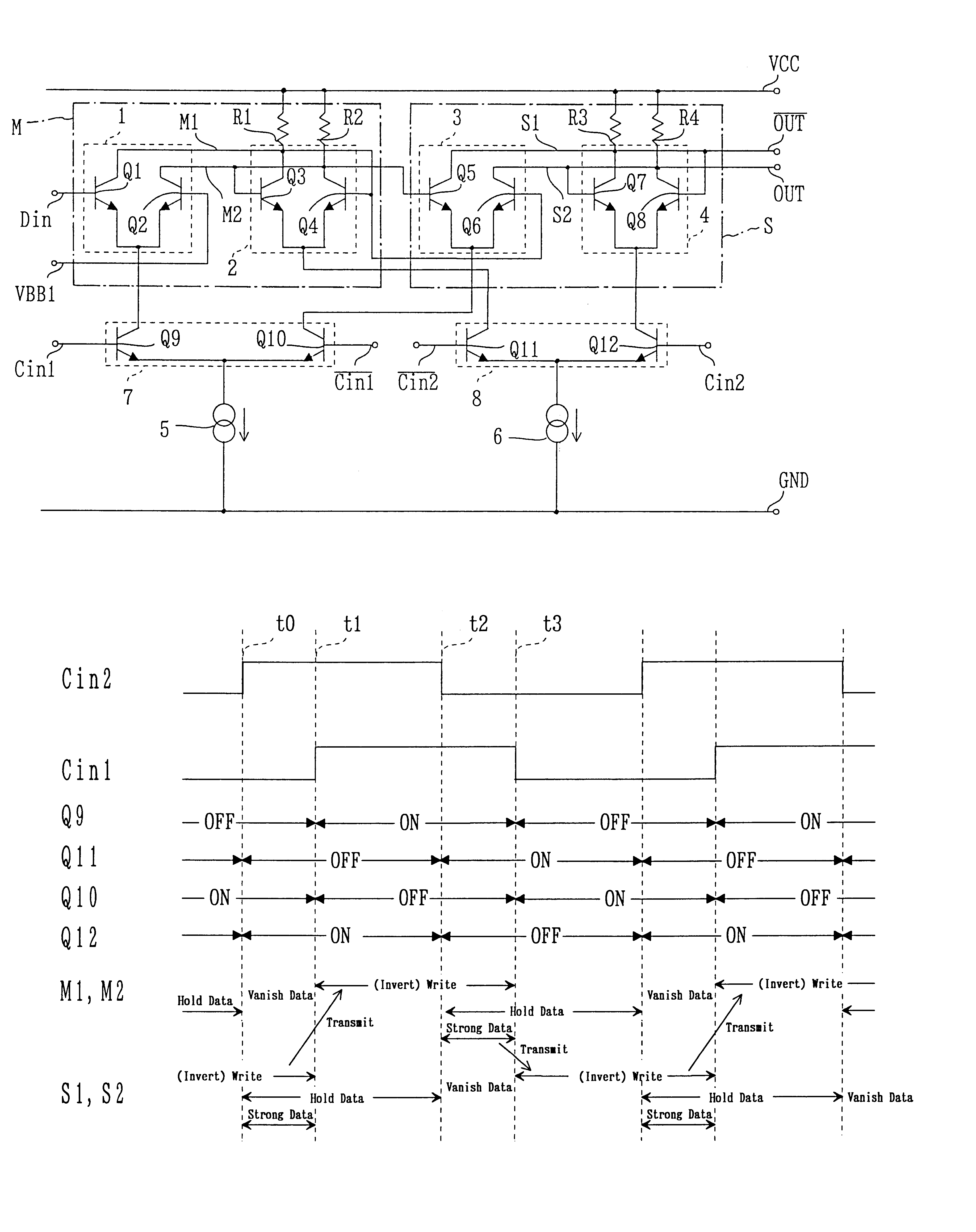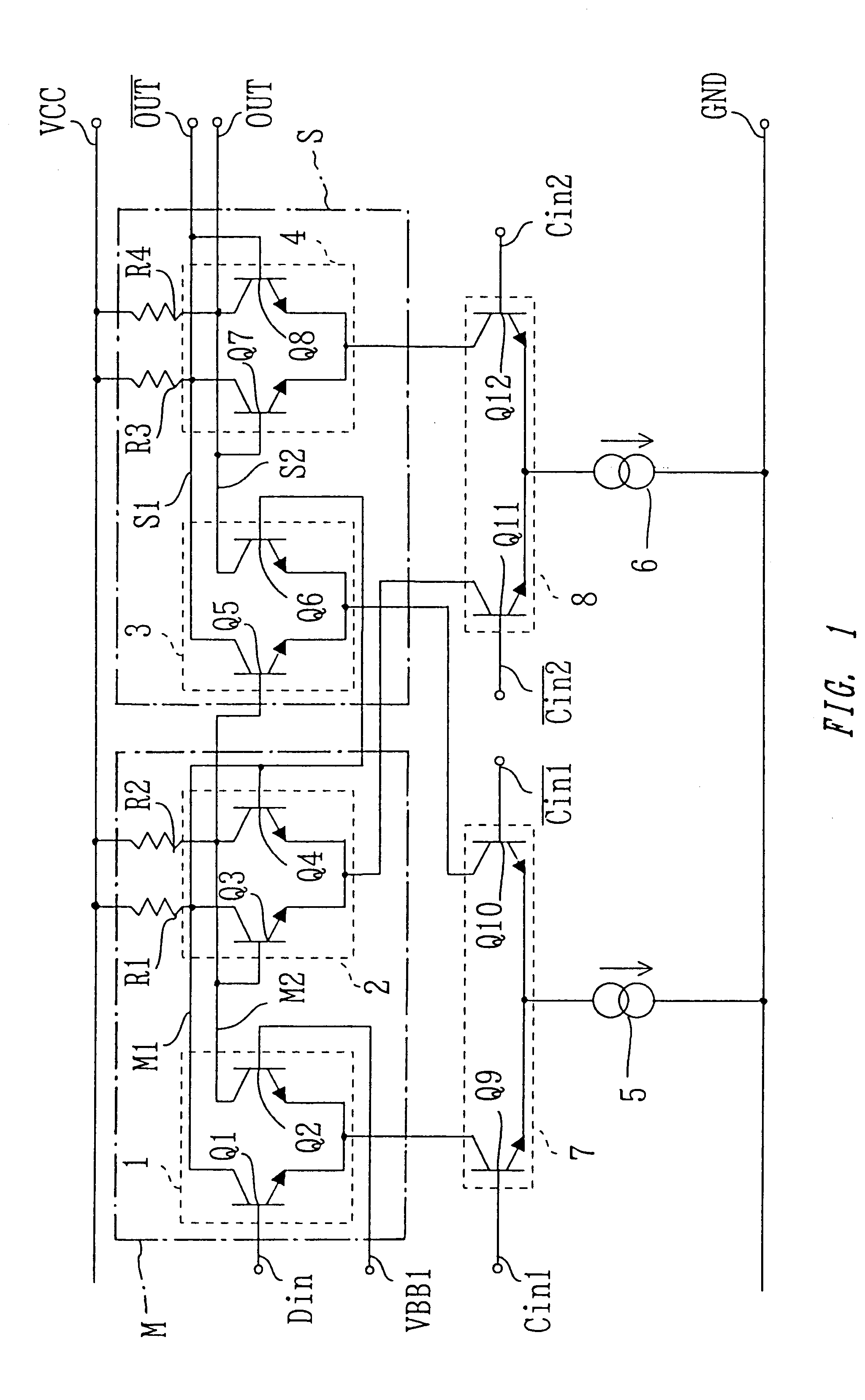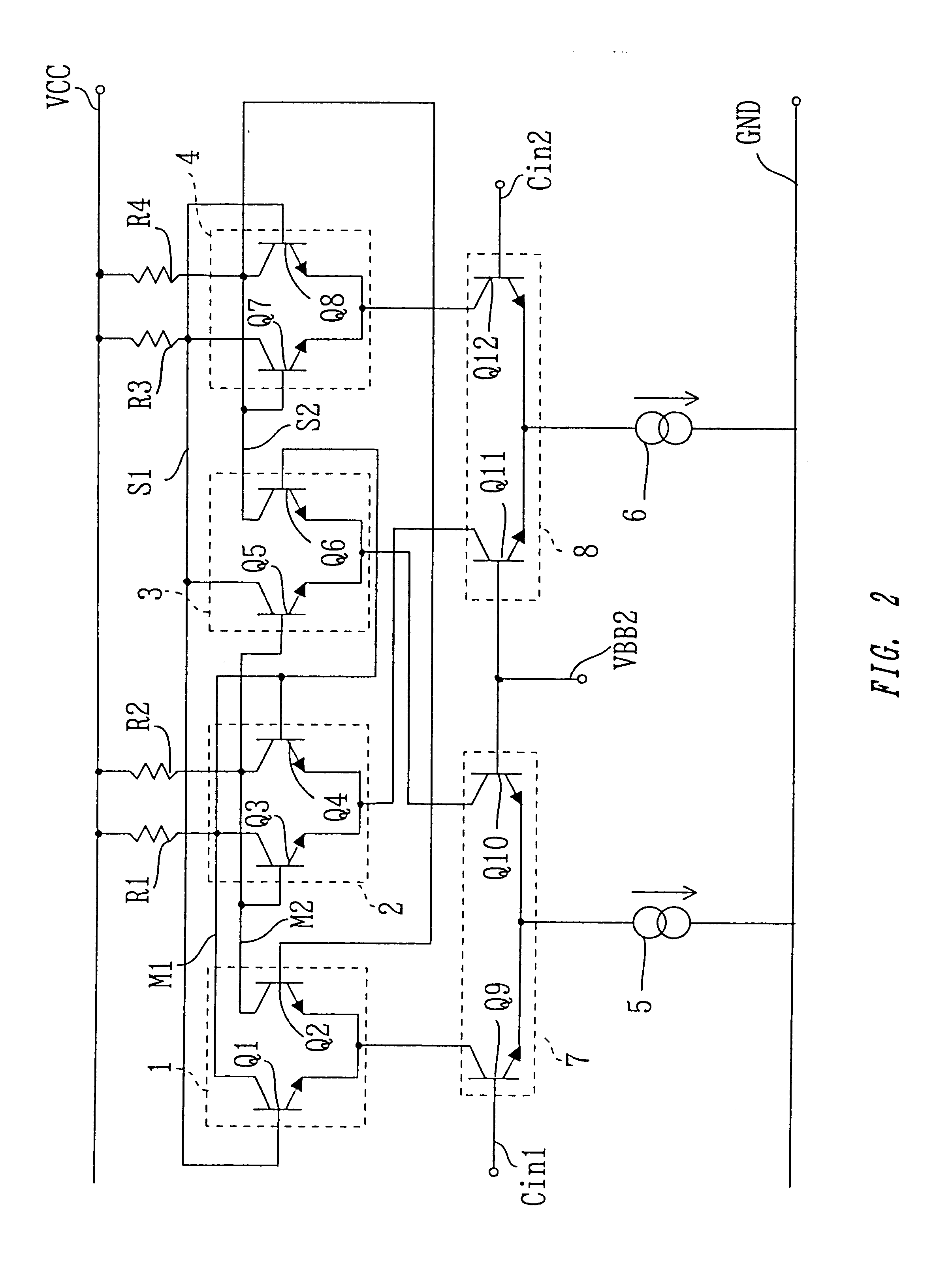D-type flip-flop circiut
a flip-flop circuit and flip-flop technology, applied in the field of d-type flip-flop circuits, can solve the problems of high frequency operation trouble, inability to write data in time, and new input data takes an extra load for inverting old data
- Summary
- Abstract
- Description
- Claims
- Application Information
AI Technical Summary
Problems solved by technology
Method used
Image
Examples
Embodiment Construction
A D-type flip-flop circuit according to a first embodiment of the present invention will be explained below.
FIG. 1 is a circuit diagram showing a structure of the D-type flip-flop circuit of the present embodiment. The structure thereof will be explained at first with reference to the figure. A master circuit M comprises a first differential circuit 1 for inputting data and a second differential circuit 2 for holding data. A slave circuit S comprises a third differential circuit 3 for inputting data and a fourth differential circuit 4 for holding data. Here, the first differential circuit comprises transistors Q1 and Q2 whose emitters are connected in common, whose collectors are connected to a source terminal VCC via resistors R1 and R2, respectively, and whose bases receive signals from terminals Din and VBB1 as data, respectively. It is noted that the signal from the terminal VBB1 may be what is inverted from that from the terminal Din or one of them may be a reference potential....
PUM
 Login to View More
Login to View More Abstract
Description
Claims
Application Information
 Login to View More
Login to View More - R&D
- Intellectual Property
- Life Sciences
- Materials
- Tech Scout
- Unparalleled Data Quality
- Higher Quality Content
- 60% Fewer Hallucinations
Browse by: Latest US Patents, China's latest patents, Technical Efficacy Thesaurus, Application Domain, Technology Topic, Popular Technical Reports.
© 2025 PatSnap. All rights reserved.Legal|Privacy policy|Modern Slavery Act Transparency Statement|Sitemap|About US| Contact US: help@patsnap.com



